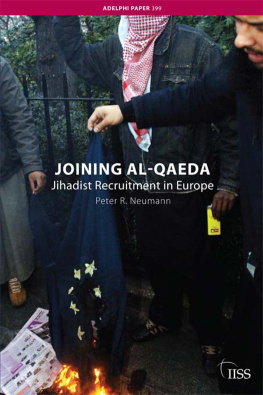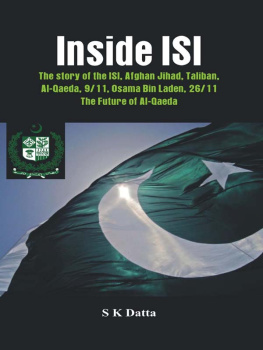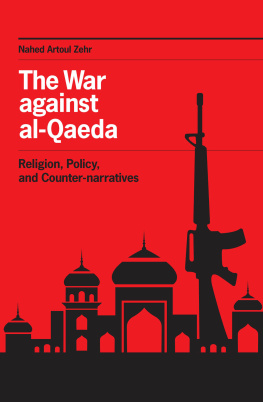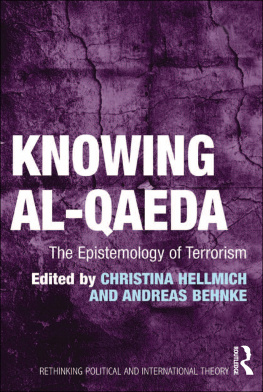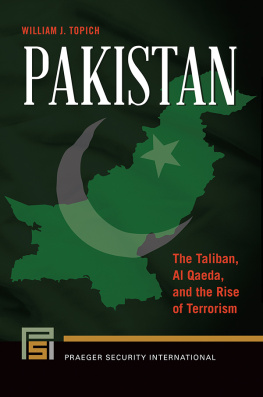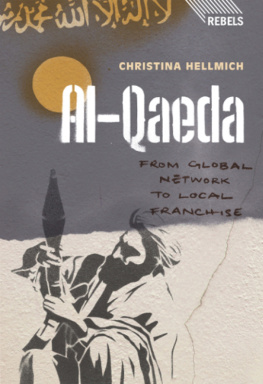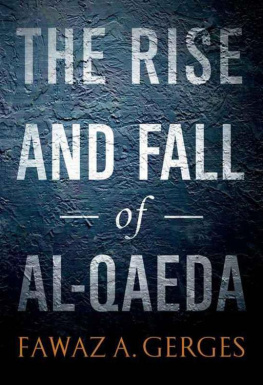Copyright 2012 University of Pennsylvania Press
All rights reserved. Except for brief quotations used for purposes of review or scholarly citation, none of this book may be reproduced in any form by any means without written permission from the publisher.
Published by
University of Pennsylvania Press
Philadelphia, Pennsylvania 191044112
www.upenn.edu/pennpress
Printed in the United States of America on acid-free paper
10 9 8 7 6 5 4 3 2 1
Library of Congress Cataloging-in-Publication Data
Silber, Mitchell D.
The Al Qaeda factor : plots against the West / Mitchell D. Silber. 1st ed.
p. cm.
Includes bibliographical references and index.
ISBN 978-0-8122-4402-1 (hardcover : alk. paper)
1. TerrorismUnited StatesCase studies. 2. TerrorismEuropeCase studies. 3. Qaida (Organization). I. Title.
HV6431.S474 2012
363.325094dc23
2011031901
Introduction
To What Extent Is Al Qaeda Involved in Al Qaeda Plots?
The horrific and devastating nature of the attacks of September 11, 2001, changed the world's perception of al Qaeda. What had been considered a small band of revolutionary terrorists with a capability limited to attacking Western targets in the Middle East and Africa was now something very different. Suddenly the group's threat profile changed drastically and the perception of al Qaeda's capabilities, strength, and ability to project force was boosted to an entirely new level.
Subsequent plots against the West perpetuated this new perception of al Qaeda as an organization that spanned the globe and had a thought-out and precise strategy to defeat the West. In a classic case of mirror imagingimagining the enemy's characteristics to reflect your own characteristicsthe perception grew that al Qaeda was highly organized and rigidly centralized and had deployed recruiters, operatives, and sleeper cells to the West who could be activated on command. These al Qaeda agents were also supposedly able to spot recruits, send them to Afghanistan or Pakistan for training, and then launch them back toward the West under precise command and control of al Qaeda central to carry out plots that would fulfill the organization's strategic aims. More than ten years after September 11, 2001, we now know this to be untrue.
Instead, we now know that the role of al Qaeda Core in global jihadist plots against the West has varied significantly over time and not all of what have been generally termed al Qaeda plots have had equivalent involvement by al Qaeda. This prompted the question that drives this study: How much is al Qaeda (what I call al Qaeda Core) involved in al Qaeda plots? Or, what is the al Qaeda factor in plots against the West?
This is a fundamental question. If we are to truly understand the nature of the threat posed by the transnational jihad, led in the vanguard by al Qaeda, we must have a greater and more nuanced understanding of the genesis and attempted execution of plots directed against the West (Europe, North America, and Australia). Al Qaeda Core's role should not be overestimated or underestimated, as important resource allocation questions for Western governments derive from the answer to these questions. It affects military, intelligence, and policing activities that are dedicated to preventing the next attack. In a sense, determining where the action is for the conspiracy before a plot is launched should drive Western counterterrorism efforts. In military terms, this would be akin to identifying what the Prussian military theorist Carl von Clausewitz called the center of gravity, or critical element of strength of al Qaeda plots, in order to provide insights on how to thwart them. To date, not enough attention has been focused on this issue.
The importance in assessing the role of al Qaeda Core in plots against the West has been even further magnified with the death this year of al Qaeda's founder and leader, Osama bin Laden. An organization that relied on its top leader for strategy, operational direction, and command and control of its actions abroad will certainly be weakened and less threatening with his demise. However, an organization that had decentralized its operations (whether by design or as a survival mechanism) will continue to pose a threat through its remnants, affiliates, and allies, as well as those whom its message can inspire to action.
What are the criteria by which one will assess the al Qaeda factor in any plot? Are there standards or benchmarks for these issues?
The following questions frame the issue.
Was there any al Qaeda role in the formation of the extremist Muslim social networks or scenes in Hamburg, Madrid, London, New York, Sydney, Toronto, and other cities that constituted the pool of future conspirators? Did al Qaeda create this pool of recruits through direct effortssending emissaries abroador, more passively, through the spread of its ideology or through the creation of a heroic narrative that inspires individuals? What was the role of the al Qaeda preachers in the West?
In what local context did young men, seeking political and religious answers and who were from varied demographic and economic strata in London, Madrid, Amsterdam, New York, and other major Western cities, begin to adopt al Qaeda's ideology and radicalize? How did the adoption of reactionary interpretations of Islam or the politicization of beliefs radicalize and ultimately mobilize individuals to action?
Was there any al Qaeda role in the formation of the breakaway clusters of men that in many cases formed the embryonic active core of conspirators? Where did the ideologues for these clusters come from? Were they connected to al Qaeda, or were they part of the indigenous local scene?
Was there any al Qaeda role in the allocation of responsibilities among the conspirators in the cluster? Was it outside guidance from al Qaeda or organic development that determined who would be in the active core of the conspiracy, who would be a follower, and who would be on the periphery of the plot? What roles did people acquire?
How did these individuals from the cluster link up with al Qaeda? Did a worldwide network of al Qaeda recruiters spot promising recruits and direct them to al Qaeda camps in Afghanistan and Pakistan, or did individuals take the initiative and seek out al Qaeda to carry out their jihadist ambitions? Were there al Qaeda facilitators in certain cities? What was their role and who were they? What role did travel to a zone of conflict play?
What type of training did these individuals receive overseas? What skills were acquired? Who provided the trainingal Qaeda or another entity? How has this changed over time?
What was al Qaeda's role in the launch of the plot? Just because an individual attended a training camp run by al Qaeda or one of its jihadist allies does not mean that the operation that he subsequently was involved in was suggested or endorsed by al Qaeda. Was the plot commanded and controlled by al Qaeda, directed by al Qaeda, or simply inspired by al Qaeda and carried out by an autonomous homegrown group?
Three possible categories for assessing the level of the al Qaeda factor in al Qaeda plots can be characterized as follows.
Al Qaeda Command and Control
Individuals from the West who traveled to Afghanistan or Pakistan met with someone of rank within in al Qaeda, or their representative, and were given a specific mission to carry out an attack in the West, which was conceptualized by al Qaeda Core. The Westerners were provided with specific guidance on means, timing, and targets, although some field control was left to the conspirators. Once the individuals returned to the West, ongoing communication with al Qaeda Core took place though a chain of command that included a link man, who served as a relay station between the plotters and al Qaeda's Chief of External Operations.


